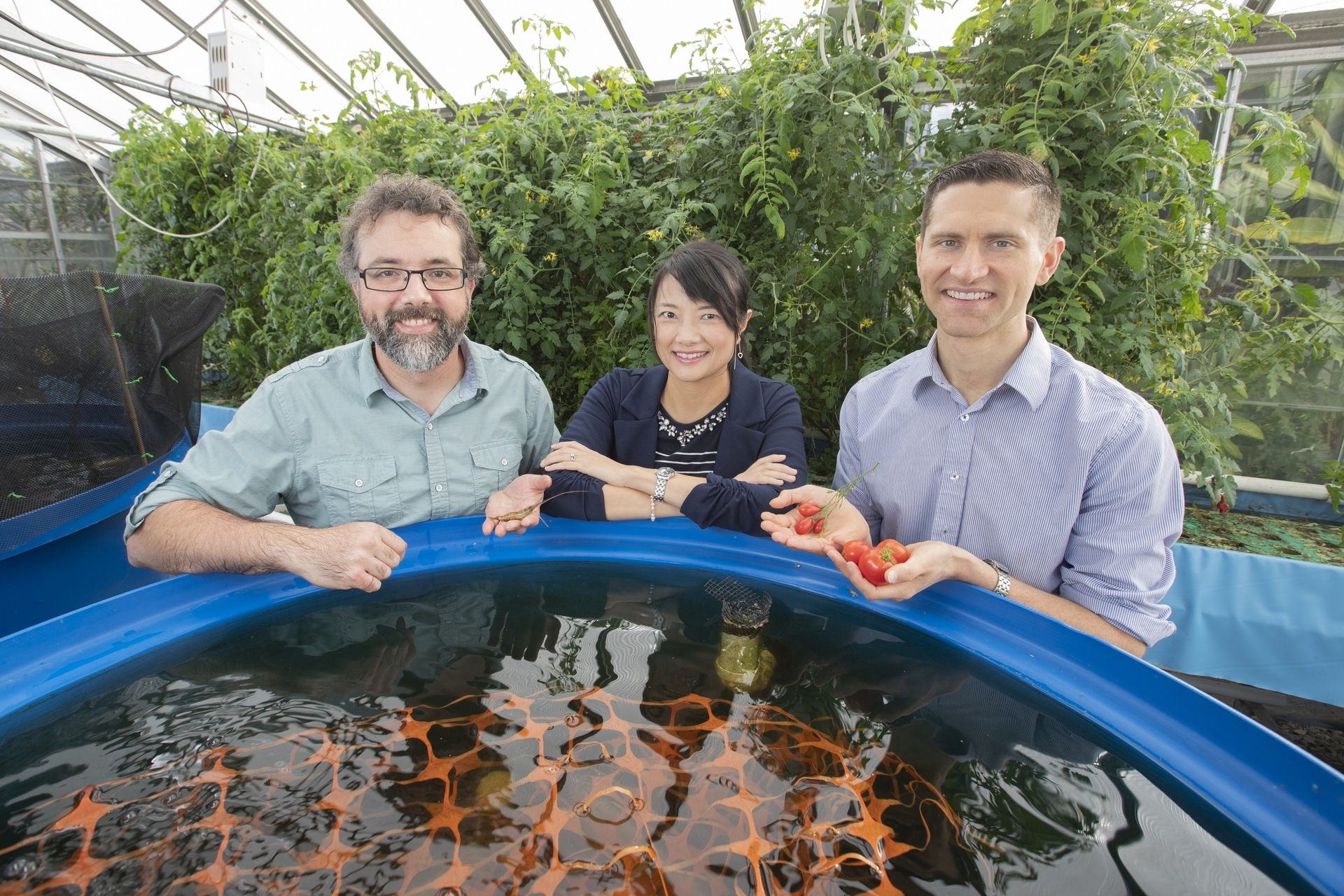

BGSU researchers receive NOAA grant for aquaponics
Team to work to improve public acceptance of sustainable practice
By Meredith Troxel
Dr. Kevin Neves, an assistant teaching professor in the Department of Biological Sciences at Bowling Green State University, always has been interested in sustainable aquaculture, or fish farming.
When he came to BGSU, the department wanted him to start a hands-on project for students. He continued to use his expertise in aquaculture to start an aquaponics system at the University.
Recently, Neves, along with two other BGSU faculty members, were awarded a $212,000 Sea Grant from the National Oceanic and Atmospheric Administration (NOAA) to improve consumer acceptance of the aquaponics system. The grant work will span two years.
Neves will work alongside Dr. Jonathan Kershaw, assistant professor in the Department of Public and Allied Health, and Dr. Fei Weisstein, associate professor in the Department of Marketing. BGSU encourages faculty to work together on numerous projects and research opportunities, spanning outside their normal classwork. This opportunity is significant in the fact that it combines faculty members from three different colleges.
The aquaponics system uses fish and prawns to help grow plants. Students feed the fish, which then produce waste. Prawns in another tank eat that waste and the water in their tank is used for plants, which grow completely on top of water without any soil. The water then gets recirculated back to the fish, after the plants have acted as a natural filter. Currently, tomato plants are being used as well as yellow perch.
“It is this integrated, multi-trophic aquatic system that is very unique,” Neves said. “As far as I know, there is not anything else like it, especially not in Ohio.”
The partnership began between Neves and Kershaw, who specializes in food and nutrition. Neves was invited to the Food and Nutrition Symposium to speak about aquaponics and got connected with Kershaw to help with sensory testing of the final crop. After working together as co-advisors for a Center for Undergraduate Research and Scholarship (CURS) grant, Neves found the NOAA grant as another opportunity to expand the aquaponics system and work with Kershaw again.
Three weeks before the grant proposal was due, Weisstein was added to the team to bring her marketing and economic experience to the project. She has previous research experience with green products and consumers’ perceptions of green products.
“I think that’s really what strengthened our proposal, is that we had a truly interdisciplinary team,” Kershaw said. “For the complex problems, we are trying to solve, you really need to bring in people from multiple disciplines.”
The project will focus on consumers’ acceptance of sustainable crops, including marketing the system to local farmers looking to adapt it as well. There will also be taste tests of the product with the public as well as selling the final crop at local farmers markets.
The researchers will use the grant to fund new analytical equipment, cover survey costs and fund student involvement with the project. Master’s student Brittany Kralik is now completing her master’s thesis about aquaculture. Undergraduate students are also helping with day-to-day activities to keep the system running smoothly.
“There are multiple opportunities for students to be involved and because of the nature of the project, we can split off with CURS projects,” Neves said. “So, if someone came up with something that was of interest, there are opportunities.”
At the end of the grant, they hope to help the community better understand aquaculture and sustainable food systems. With the hope that their work can contribute more to the industry, the team is aiming to prove that crops from an aquaponics system are just as good — or better — than organic crops.
“Hopefully, we will have some personal connection with local farmers so if they are interested. We can work with them if they want to implement a similar system to make it more commercialized,” Weisstein said.
The team is eager to work more on their research and their collaboration together. Although they are facing a few initial challenges, such as using different methods and valuing different parts of the process, they are recognizing those challenges.
“We all bring our individual strengths,” Neves said. “It is not just throwing in other departments or other colleges to make it collaborative, but everyone is putting in equal time, equal weight and equal importance into the success of the project.”
Updated: 11/14/2019 04:10PM
